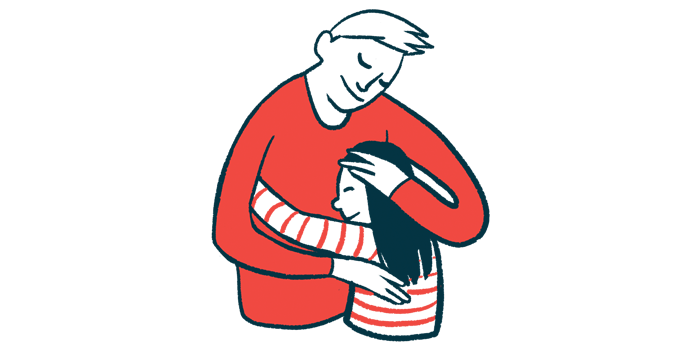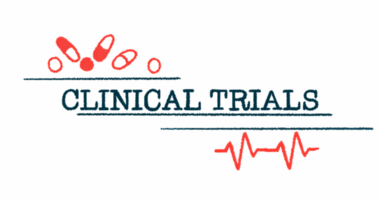MGFA Session 2025: Vyvgart safe, effective in adolescents with gMG
Data show therapy may address unmet treatment need for juvenile patients

Vyvgart (efgartigimod alfa-fcab), currently approved in the U.S. for treating certain adults with generalized myasthenia gravis (gMG), safely eased disease severity in adolescents with the disease, according to new data from a Phase 2/3 trial.
Called ADAPT JR (NCT04833894), the study is still recruiting younger children, ages 2-11, at sites in the U.S. and Europe.
The findings were discussed by Abigail Schwaede, MD, in an oral presentation during the Myasthenia Gravis Foundation of America scientific session at the American Association of Neuromuscular & Electrodiagnostic Medicine annual meeting, held today in San Francisco.
“[Vyvgart] may address an unmet need for the treatment of gMG in juvenile patients,” Schwaede, a pediatric neuromuscular specialist at the Lurie Children’s Hospital of Chicago and an investigator for the ADAPT JR study, said in the presentation, titled “Results from the ADAPT Jr Study Investigating Intravenous Efgartigimod in Juvenile Generalized Myasthenia Gravis.”
Juvenile myasthenia gravis accounts for 10% of all MG cases
In people with gMG, the immune system mistakenly produces self-reactive antibodies that attack proteins important for nerve-muscle communication. Acetylcholine receptors, or AChRs, are the most common target of these attacks.
Juvenile myasthenia gravis, when the disease affects children and adolescents, is extremely rare, accounting for about 10% of all MG cases worldwide, according to Schwaede.
Given this rarity, it’s difficult to recruit participants for clinical trials, and children with gMG have fewer approved treatment options than their adult counterparts.
“There remains an unmet need … for patients with pediatric MG,” Schwaede said. “We have very limited available products that are [U.S. Food and Drug Administration] approved, and it can be a very debilitating disease.”
Vyvgart, developed by Argenx, belongs to a class of therapies called FcRn blockers, which work to lower levels of the harmful antibodies that drive gMG symptoms. Specifically, the medication accelerates their destruction by inhibiting FcRn, a protein that normally helps prevent the breakdown of antibodies circulating in the bloodstream.
In the U.S. and Europe, Vyvgart is approved for adults with gMG who are positive for anti-AChR antibodies. It is given via weekly infusions into the bloodstream in four-week cycles.
Levels of circulating antibodies see ‘precipitius drop’ after 1 dose of Vyvgart
The ADAPT JR trial, funded by Argenx, is testing Vyvgart in children and adolescents ages 2 to 17 with anti-AChR-positive gMG who have had an unsatisfactory response to standard care and are on a stable background therapy regimen.
In the first dose confirmatory part of the study, participants received a single infusion of Vyvgart and were monitored for eight weeks. In the second part, lasting 18 weeks, all participants received a full four-week cycle of Vyvgart, were monitored for the following month, and then could receive additional treatment cycles as needed up to week 26 of the study, or about six months.
Schwaede’s presentation focused on the trial’s 11 adolescent participants, ages 12-17.
Data from the first part of the study showed that after a single dose of Vyvgart, levels of circulating antibodies — including anti-AChR antibodies — exhibited a “precipitous drop … that then recovers over the next several weeks,” Schwaede said.
Similar declines were observed after the first two treatment cycles in the second part of the study. These reductions were similar to what has been seen previously in adult patients.
Scores on the Myasthenia Gravis Activities of Daily Living (MG-ADL) scale — a standard measure of disease activity — rapidly decreased by a median of 2 points with the first treatment cycle. A decrease signifies an improvement and less severe symptoms. Nearly three-quarters of the young patients (72.7%) achieved an MG-ADL score of 0 or 1, reflecting minimal to no gMG symptoms.
Of the five patients who required a second treatment cycle due to symptom reemergence, similar improvements in MG-ADL scores were observed after the second round of dosing.
Treatment well tolerated by adolescent participants
Following the main study, participants could roll over into a long-term extension study called ADAPT JR+ (NCT05374590), where they are receiving additional cycles of Vyvgart as needed.
Data covering up to nine treatment cycles for patients who required additional therapy showed that, “repeatedly with each cycle, you have a decrease in the MG-ADL,” Schwaede said.
Up to two-thirds of children (66.7%) achieved an MG-ADL score of 0 or 1 in cycle 3, meaning minimal symptom expression.
Hopefully, with more information from the childhood cohort, we’ll be able to better understand how we can serve our pediatric populatio.
The safety data were similar to what has been observed in adult gMG patients. The treatment was well tolerated by adolescent participants, with the most common adverse events being headache and sore throat.
“There were no discontinuations in the trial due to side effects from the medication itself,” Schwaede noted.
Despite being limited by a small number of participants — a challenge common to all pediatric MG studies — Schwaede noted that the key takeaway is there was a “reproducible decrease in MG-ADL” scores, as well as in antibody levels, suggesting a clinical benefit in these adolescent patients.
Data from the younger participants, who are still being recruited, will be presented at a later date.
“Hopefully, with more information from the childhood cohort, we’ll be able to better understand how we can serve our pediatric population,” Schwaede concluded.
Note: The Myasthenia Gravis News team is providing virtual coverage of Myasthenia Gravis Foundation of America’s scientific session at the American Association of Neuromuscular & Electrodiagnostic Medicine Annual Meeting Oct. 29. Go here to see the latest stories from the conference.









Leave a comment
Fill in the required fields to post. Your email address will not be published.